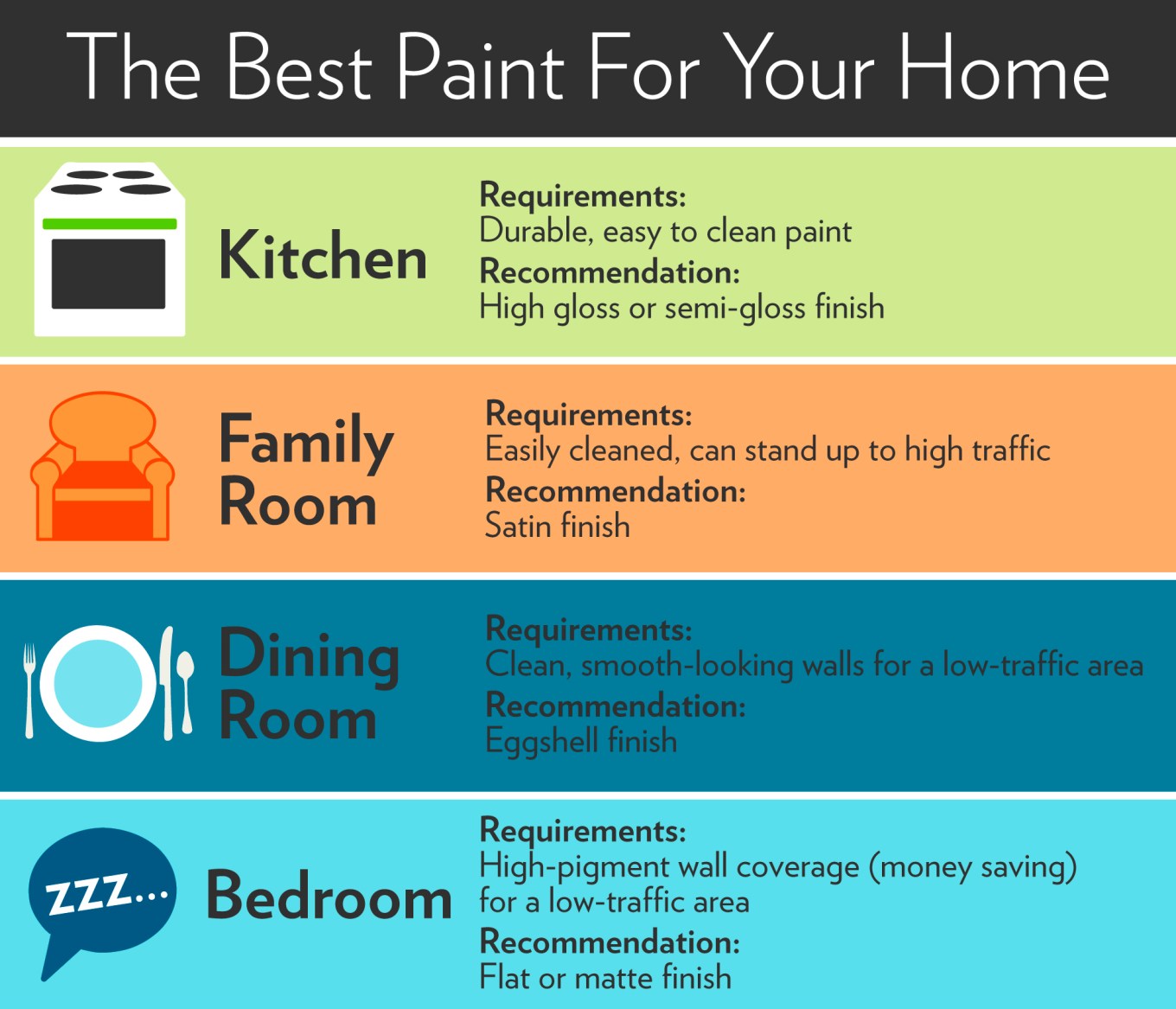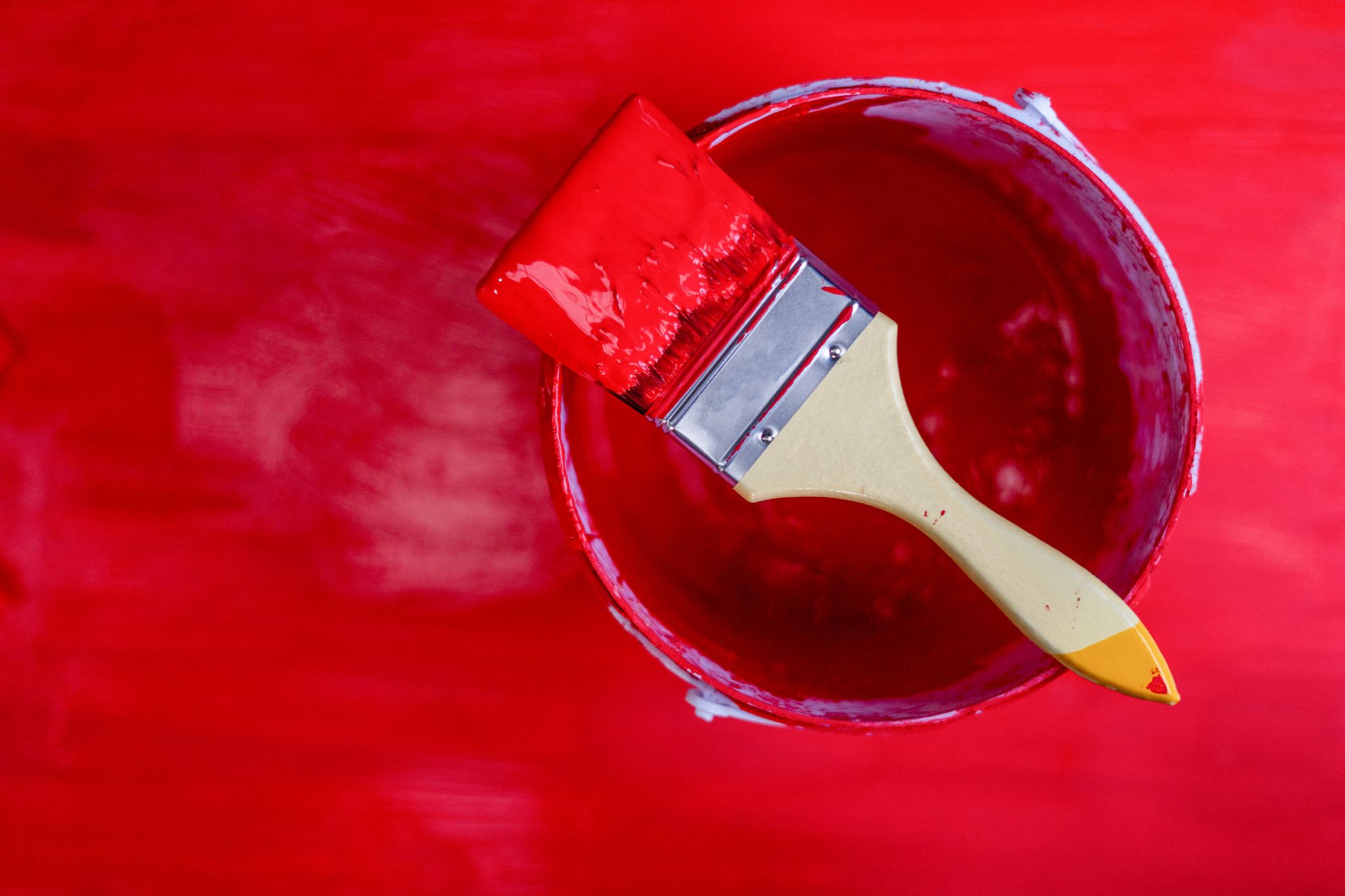There’s a basic rule of thumb to follow when choosing paint sheens: The higher the sheen, the higher the shine — and the higher the shine, the more durable the paint will be.
Flat paint has no shine; high-gloss is all shine. In between are eggshell, satin, and semi-gloss, each with its own practical and decorative job to do.
Here’s how to choose the right paint sheen for your painting job.
What's the Difference between Paint Sheens?
High Gloss
The most durable and easy to clean of all paint sheens, high-gloss paint is hard, ultra-shiny, and light-reflecting. Think appliance-paint tough.
High gloss is a good choice for areas that sticky fingers touch — cabinets, trim, and doors. High-gloss, however, is too much shine for interior walls. And like a Spandex dress, high gloss shows every bump and roll, so don’t skimp on prep work.
- Practical application: kitchens, door, and window trim
- Durability: very high
Semi-Gloss
Good for rooms where moisture, drips, and grease stains challenge walls. Also great for trim work that takes a lot of abuse.
- Practical application: kitchens, bathrooms, trim, chair rails
- Durability: high
Satin
Has a yummy luster, which, despite the name, is often described as velvety. It’s easy to clean, making it excellent for high-traffic areas. Its biggest flaw is it reveals application flaws, such as roller or brush strokes. Touch-ups later can be tricky.
- Practical application: family rooms, foyers, hallways, kids' bedrooms
- Durability: high
Eggshell
Between satin and flat on the sheen (and durability) scale is eggshell, named because of its essentially flat (no-shine) finish with little luster, like a chicken’s egg. Eggshell covers wall imperfections well and is a great finish for gathering spaces that don’t get a lot of bumps and scuffs.
- Practical application: dining rooms, living rooms
- Durability: medium
Flat or Matte
A friend to walls that have something to hide, flat/matte soaks up, rather than reflects, light. It has the most pigment and will provide the most coverage, which translates to time and money savings. However, it’s tough to clean without taking paint off with the grime.
- Practical application: adults' bedrooms and other interior rooms that won’t be roughed up by kids
- Durability: medium-low

Tips for Choosing the Right Sheen
If your paint color is dark and rich but you don’t want a super shiny effect, step down at least one level on the sheen scale. That’s because the darker and richer the paint color is, the more colorant it has, which boosts sheen. Ditto if you’re painting a large, sunwashed, or imperfect wall. The higher the sheen, the more defects will show.
Adding sheen also increases the cost, usually an extra couple dollars of per gallon as you step up on the sheen scale.
Related:
